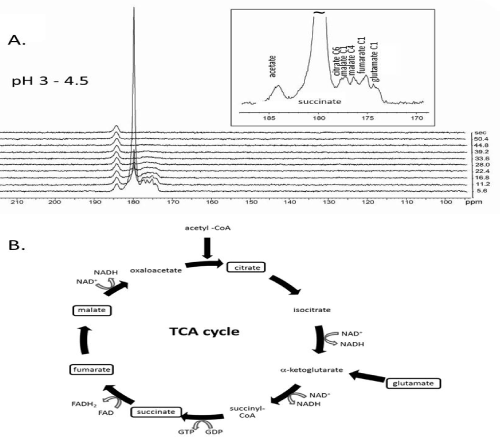
 |
| Figure 2: Real time detection of Krebs cycle metabolism in a subcutaneous RENCA of a living mouse using hyperpolarized 13C MRS. The mouse received 10 μmoles hyperpolarized succinate by tail vein injection. Metabolic products from hyperpolarized 13C SUC (the largest peak) were detected in the tumor within 10 seconds of the injection of the hyperpolarized substance via the tail vein (pH 3 – 4.5) and persisted through 28 secs. Using the 3 M 13C acetate phantom (non-hyperpolarized) as a reference, the four distinct metabolites are assigned to malate C1, malate C4, citrate C6, fumarate C1 and glutamate C1. This experimental result was confirmed in six animals. The pattern of the resonances as well as the tentative assignments by chemical shift, strongly suggests that hyperpolarized 13C succinate is metabolized in vivo and that metabolites of succinate within Krebs cycle retain a significant fraction of hyperpolarized signal. B. The corresponding Krebs cycle of oxidative cellular metabolism in RENCA tumors is illustrated. The metabolite pools of implanted tumor which become enriched from exogenous 13C succinate within the T1 of hyperpolarization are indicated in boxes. |